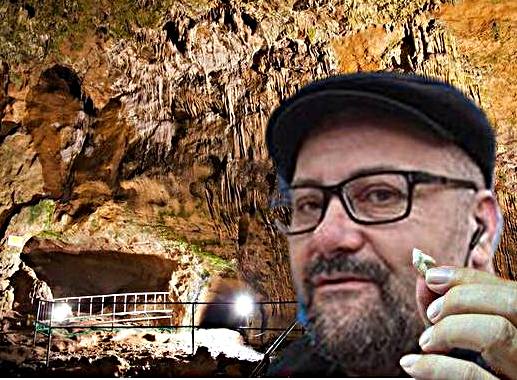
Stefan Proinov European History.
The genetic sequencing of human remains 45,000 years ago, discovered in Bulgaria in 2020, speaks of an unknown migration to Europe and proves that mixing with Neanderthal populations was more frequent than expected, reports AFP.
These human remains, including a tooth, were discovered in the Bacho Kiro Cave in 2020. Genetic sequencing found that these individuals were closer to the current populations of East Asia, North and South America, than to Europeans.
The finding suggests they were part of a human migration to Europe that has not been known in the genetic history of migration, according to a study published in the journal Nature. Genetic research is evidence that there was some continuity between the first modern humans in Europe and the people who later lived in Eurasia, the study said.
They change our initial notions of the first human migrations in Europe. According to study leader Mateja Haidinyak of the Max Planck Institute for Evolutionary Archeology, the new findings speak to the turbulent history of modern Europeans on a continent where there has been population exchange.
The remains found in the Bacho Kiro Cave in Bulgaria showed at first that humans lived with Neanderthals earlier than previously thought. But their genetic analysis also suggested that these early humans and Neanderthals reproduced each other more often than we imagined.
All individuals from the cave in “Bacho Kiro” had Neanderthal ancestors from 5 to 7 generations before them. This suggests that reproduction between the first humans to inhabit Europe and the Neanderthals was common, according to Haidinyak. The first evidence in this regard relates to the discovery in Romania of a 40,000-year-old individual named Oase 1.
These findings were accompanied by another study published in the journal Nature and Evolution on the sequencing of the genome of parts of a skull found in the Czech Republic.
The find was made in 1950 in the area of Zlati Kun, and her age was controversial. The first analyzes estimated the remains at 30,000 years, but a more recent carbon 14 dating set it at 15,000 years. But genetic analysis has said its last word – they are 45,000 years old, according to a study in Nature. Its author is Kai Prüfer from the archeological department of the Max Planck Institute.
“We are based on the fact that all those people whose ancestors come from individuals who left Africa more than 50,000 years ago carry something Neanderthal in their genes,” he said.
These traces appear in “short blocks” in the genome of modern man and in longer ones, the more we go back in time. This is the case with the man from Ust-Ishim, a fossil of Homo sapiens, found in Siberia and living “45,000 years ago. It’s similar to the woman from Zlati Kuhn, who has even longer blocks. That means she lived in the same era or even earlier,” said Kai Purfer.
Stefan Proinov: this turns the history of Europe upside down
We hope we have been helpful to you
Art expert
For you betrayed: Stefan Ivanov Proynov
See more: fakeart.eu






